The roar of a custom motorcycle engine can be music to a rider’s ears, but what about the artistry that goes into crafting the unique parts that make up the bike’s frame?
TIG welding, or Tungsten Inert Gas welding, is a process that allows welders to fuse metal parts together with precision and control, creating seamless connections that can withstand the rigors of the road.
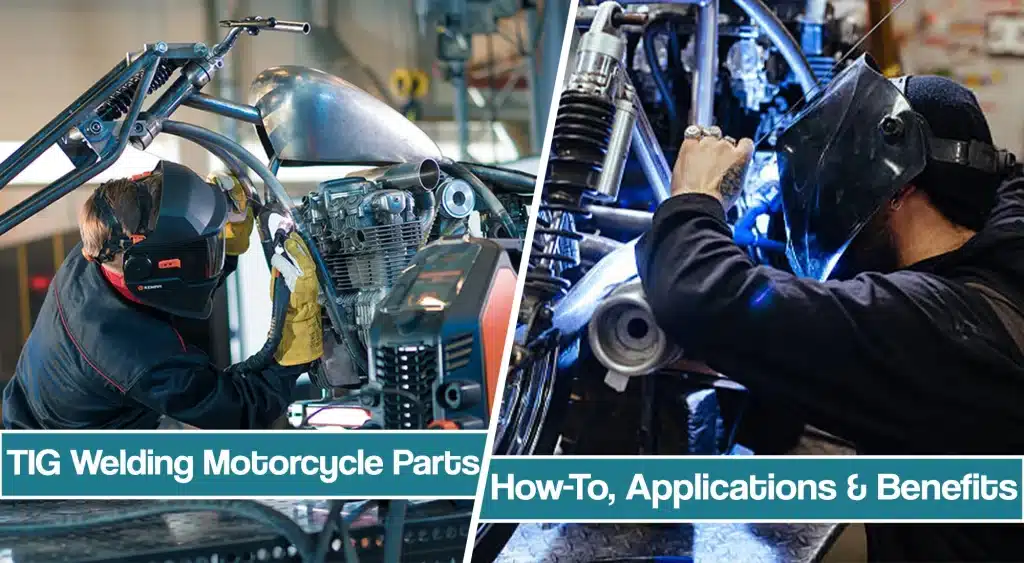
In the world of custom motorcycle parts, TIG welding is an essential skill for those looking to push the boundaries of design and functionality. So, buckle up and get ready to take a deep dive into the world of TIG welding for custom motorcycle parts and fabrication.
Welding Custom Motorcycle Parts
Welding custom motorcycle parts is a specialized process that involves fusing metal parts together to create a unique, customized look and feel for a motorcycle. This process can include welding together various metal parts own custom bike, such as frames, handlebars, exhaust systems, fuel tanks, and more.
Some of the most common parts that are welded in custom motorcycle welding include the frame and subframe, which provide the backbone of the motorcycle and support the weight of the rider and engine.
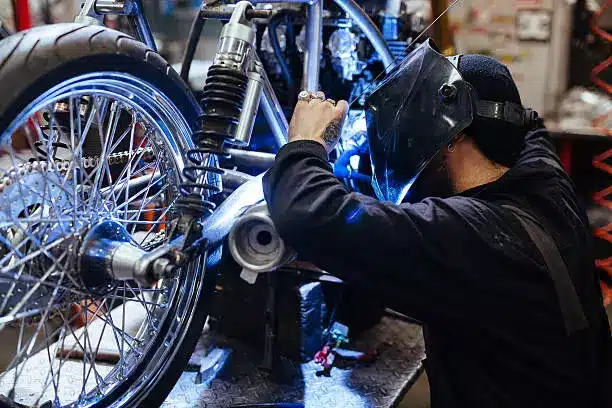
Handlebars, which are essential for controlling the motorcycle, are also commonly welded. Exhaust systems, which can greatly affect the sound and performance of the motorcycle, are also typically welded together. Additionally, fuel tanks, fenders, and other body parts may also require welding to create the desired custom look and fit.
Why Choose TIG Welding For Custom Motorcycle Parts And Fabrication?
Even though you can use Gas Metal Arc Welding (MIG welding), TIG welding is a precise welding process that allows welders to control the heat input, amperage, and electrode feed rate to create a precise, clean weld. This precision is essential in creating high-quality custom motorcycle parts that fit together seamlessly and perform flawlessly. Tig welding is certainly the best option when welding the bike frame or gas tank. The reason for this is that TIG welding offers a better quality weld and gives the welder a lot more control over the weld produced.
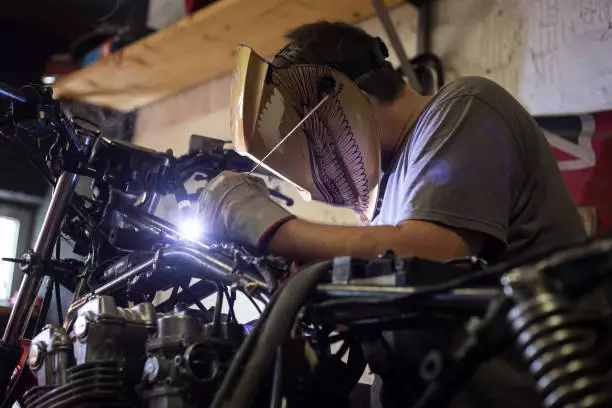
Additionally, TIG welding produces a clean weld that doesn’t leave behind any slag or spatter, which is ideal for custom motorcycle parts that require a high-end finish. The lack of slag and spatter also means that less post-weld cleanup is needed. Gas Tungsten Arc Welding is used to weld a variety of metals, and welders use it to weld aluminum, steel, and stainless steel. This makes it a versatile choice for custom motorcycle parts that may require the welding of different types of metals.
TIG welding produces strong, durable welds that can withstand the rigors of the road. This is particularly important for custom motorcycle parts that must be able to withstand high speeds, bumps, and vibrations. It produces a visually appealing weld that adds to the overall aesthetic of the custom motorcycle. This is particularly important for custom motorcycles, which are often prized for their unique and eye-catching designs.
What Are Common Materials Used For Custom Parts?
Custom motorcycle parts can be made from a variety of materials, depending on the owner’s manual, desired aesthetic, functionality, and budget. Here are some of the most common materials used for custom motorcycle parts:
- Steel: Steel is a popular choice for custom motorcycle parts because it is strong, durable, and relatively inexpensive. It is commonly used for frames, handlebars, and other structural components. Drawn-over-mandrel (DOM) steel tubing is often used for the motorcycle frame material. DOM refers to high-strength, electrically welded tubing that has been further processed by cold drawing through dies and over mandrels to improve its uniformity, mechanical properties and surface finish.
- Aluminum: Aluminum is lightweight and has a high strength-to-weight ratio, making it a popular choice for custom motorcycle parts that require a high level of performance. It is commonly used for wheels, swingarms, and fuel tanks.
- Stainless Steel: Stainless steel is corrosion-resistant and has a polished finish, making it a popular choice for custom motorcycle parts that require a high-end look. It is commonly used for exhaust systems and other components that are exposed to the elements.
- Carbon Fiber: Carbon fiber is lightweight, strong, and has a distinctive look, making it a popular choice for custom motorcycle parts that require a high-performance aesthetic. It is commonly used for bodywork, such as fenders and fairings.
- Titanium: Titanium is lightweight and strong, making it a popular choice for custom motorcycle parts that require a high level of performance. It is commonly used for exhaust systems and other components that are exposed to high temperatures.
How Much Do TIG Welders In Motor Vehicle Parts Manufacturing Make?
According to the U.S. Bureau Of Labor Statistics, TIG welders who work in the production of motor vehicle parts can earn an average annual salary of $42,220. These welders may be involved in the production of components such as exhaust systems, frames, or suspension parts. However, things may differ in practice. The estimated salary can differ on the current state, years of experience, company, and many more.
That’s why entry-level TIG welders with 0-2 years of experience make approximately $30,000 a year. In the lowest-paying states, such as Georgia or Alabama, the apprentices, and low-end welder salary goes down to $26,100.
Meanwhile, TIG welders with more than 5 years of experience in motorcycle parts and fabrication can easily earn up to $100,000 a year. This, yet again, varies on the state, company, work hours, and more, but as a seasoned welder, you should expect $80,000-100,000.
TIG Welding Equipment For Motorcycle Parts
The required TIG welding equipment for welding custom motorcycle parts metal fabrication includes a TIG welding machine, tungsten electrodes, filler material, gas supply, welding torch, and welding table. It is important to choose the appropriate equipment and materials for the specific welding needs to ensure high-quality, durable welds that meet the desired aesthetic and functional requirements.
TIG Welding Machine
TIG welding machine, also known as a TIG welder, is the primary piece of equipment needed for TIG welding. The machine generates the electric arc used to fuse the metal parts together. TIG welders are available in a range of sizes and power outputs, depending on the specific welding needs. The specific TIG welder needed for welding motorcycle parts will depend on several factors, including the type of metal being welded, the thickness of the metal, and the desired weld quality.
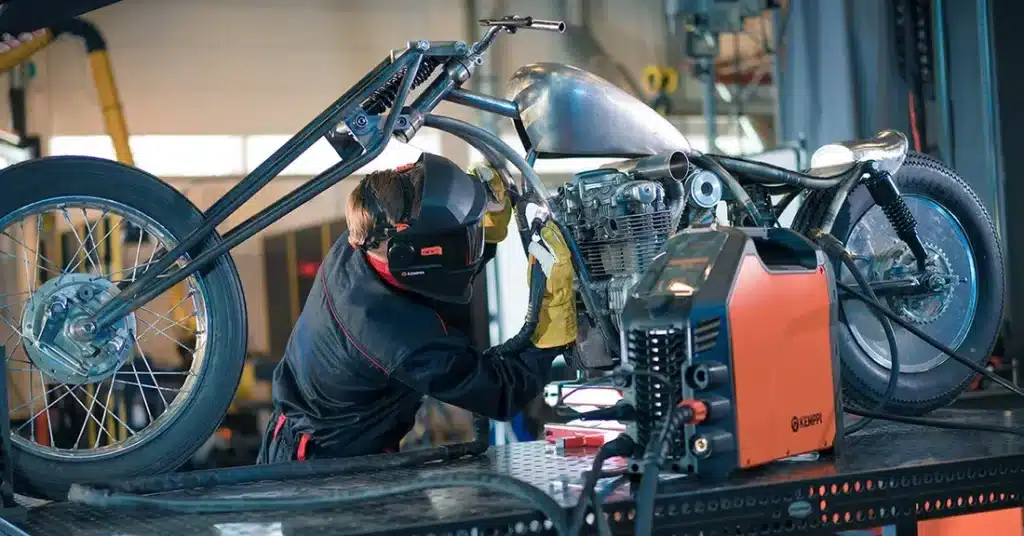
An amperage range of at least 5 to 200 amps is suitable for welding motorcycle parts. This range will allow for the welding of a variety of thicknesses and types of metal. A TIG welder with both AC and DC capability is recommended for welding motorcycle parts. DC welding is suitable for welding steel, while AC welding is needed for welding aluminum and other non-ferrous metals.
A pulse feature is recommended for welding motorcycle parts. The pulse feature allows for greater control over the welding process, resulting in cleaner, more precise welds. High frequency allows for easy starting of the welding arc without the need for contact, reducing the risk of contamination and damage to the tungsten electrode.
Tungsten and Filler Material
The most commonly used tungsten type for welding motorcycle parts is thoriated tungsten, and the recommended size is 1/16″ (1.6 mm) or 3/32″ (2.4 mm). Thoriated tungsten electrodes are a popular choice for custom motorcycle parts because they have a good current-carrying capacity and provide a stable arc, making them suitable for welding a variety of metals.
However, thoriated tungsten contains a small amount of radioactive material, which can be hazardous if ingested or inhaled. Therefore, many welders today choose 2% ceriated, or 1.5% lanthenated tungsten electrode.
The preferred filler metal for custom motorcycle parts depends on the type of metal being welded and the specific welding application. However, in general, the most commonly used filler metals for TIG welding motorcycle parts are ER70S-2 and ER4043. ER70S-2 is a mild steel filler metal that is suitable for welding steel components such as frames, brackets, and exhaust systems.
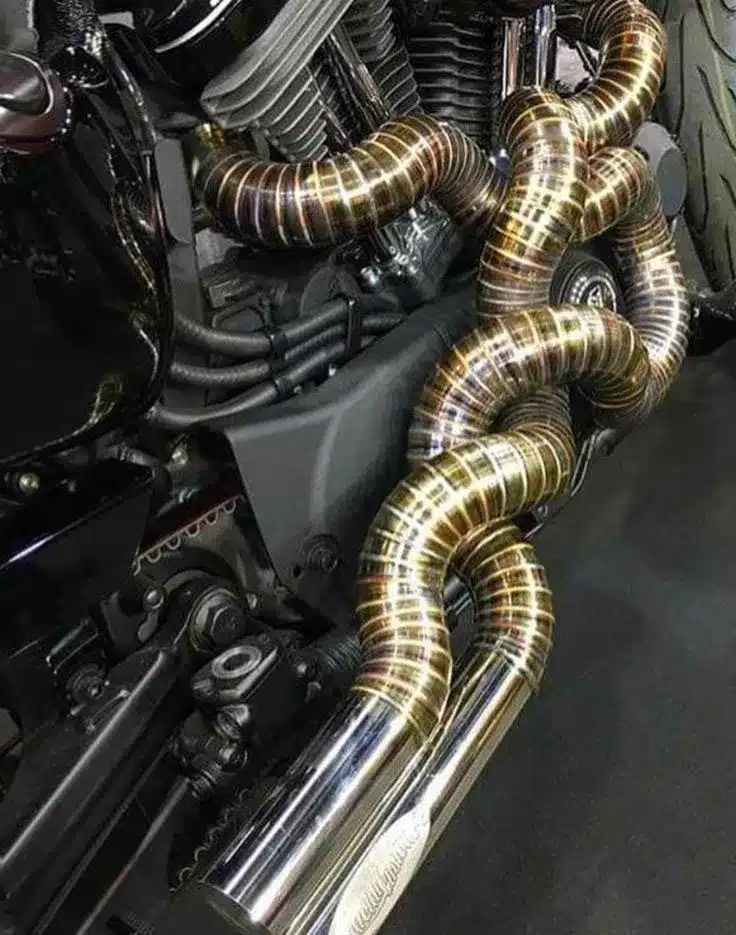
It has good strength and ductility properties and is easy to use, making it a popular choice for general-purpose welding. ER4043 is an aluminum filler wire or metal that is suitable for welding aluminum components such as fuel tanks, fenders, and other non-ferrous parts. You can find it as welding wire, and it has good corrosion resistance and is easy to use, making it a popular choice for welding aluminum parts.
Tips and Techniques For TIG Welding Custom Parts
TIG welding is a precise welding process that requires skill and attention to detail. The following are some general guidelines for the correct welding technique when TIG welding custom motorcycle parts:
- Prepare the surfaces: Before welding, the surfaces to be joined should be cleaned and prepped to ensure a strong and durable weld. Remove any rust, dirt, or other contaminants using a wire brush or grinder, and ensure that the edges of the parts are clean and smooth.
- Set up the welding equipment: Set up the TIG welding machine according to the manufacturer’s instructions. Select the appropriate tungsten, filler metal, and shielding gas for the specific welding application.
- Hold the torch correctly: Hold the TIG welding torch with both hands and maintain a steady grip throughout the welding process. Keep the torch at a consistent angle and distance from the base metal the workpiece to maintain a stable arc.
- Start the arc: Strike the arc by tapping the tungsten electrode on the workpiece, then lift one foot of the torch slightly to establish an arc. Move the torch in a circular or side-to-side motion to heat the metal evenly.
- Add filler metal: Once the metal is heated, add the filler metal to the joint using a steady hand. The filler metal should be added consistently and evenly to ensure a strong and durable weld.
- Control the heat: Control the heat by adjusting the amperage and travel speed. The heat should be applied evenly to avoid distortion or warping of the metal.
- Finish the weld: Once the welding is complete, slowly move the torch away from the workpiece to allow the metal to cool down gradually. Use a wire brush to remove any slag or residue from the weld, then inspect the weld for defects.
Four-Bead TIG Joint On Tubes
Welding all around the tubes of motorcycle frames can yield different results. If you just start welding it with one angle on the gun/torch and end up pushing it as the gun/torch rotates around the tube, you will change the bead profile and penetration.
Instead, make four welds on a tube, 90 deg at a time. Start on one side, repeat on the opposite side, and tie the two together. That way, you alternate the heat input, creating less stress on one side of the tube, which will help keep the frame square.
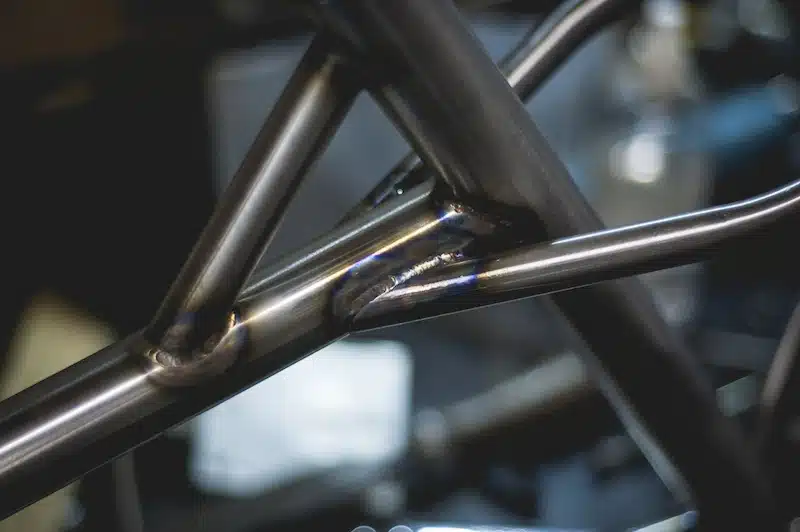
To achieve a good tie-in between all weld beads, start just on top of the last weld you made to get the previous weld bead “dime” molten. Another option is to start the arc by directing the electrode at the root of the joint, quickly backstepping into the previous weld bead, then traveling forward and welding over your arc start and remelting it.
For out-of-position welds on tubing (a fact of life because the frame will be fixed in a jig), welding in the uphill position will provide more consistent heat control and better penetration. Start at 6 o’clock and work your way up to the 12 o’clock position. Welding uphill may take longer because gravity pulls the bead down, but this ensures that you have a better chance of keeping the arc on the leading edge of the molten weld pool, which achieves good penetration
Conclusion
TIG welding is an excellent choice for custom motorcycle parts due to its precision, versatility, cost effective and ability to weld thinner material. It is a popular welding process that is used to join various and thinner materials used in motorcycle parts, such as steel, aluminum, and titanium.
The TIG welding process offers excellent control and accuracy, making it ideal for creating intricate designs and ensuring a high-quality finish. With the right equipment, tungsten, and filler metal, along with proper welding techniques, one can create strong and durable welds that will withstand the harsh environments and stresses that motorcycle parts are exposed to.
Even though many use Metal Inert Gas (MIG) or other welding processes, GTA welding is an essential skill for anyone interested in customizing or repairing motorcycle parts.
Resources
- https://www.millerwelds.com/resources/article-library/selecting-mig-and-tig-for-tube-welding-the-foundation-for-building-a-motorcycle
- https://www.wcwelding.com/motorcycle-welding.html
- https://www.bikeexif.com/motorcycle-welding
- https://www.motorcyclecruiser.com/story/tips-and-tech/tech-tig-welding-steel-101/
- https://www.rider.com/motorcycle-community/motorcycle-technology-tips/welding-part-1/




